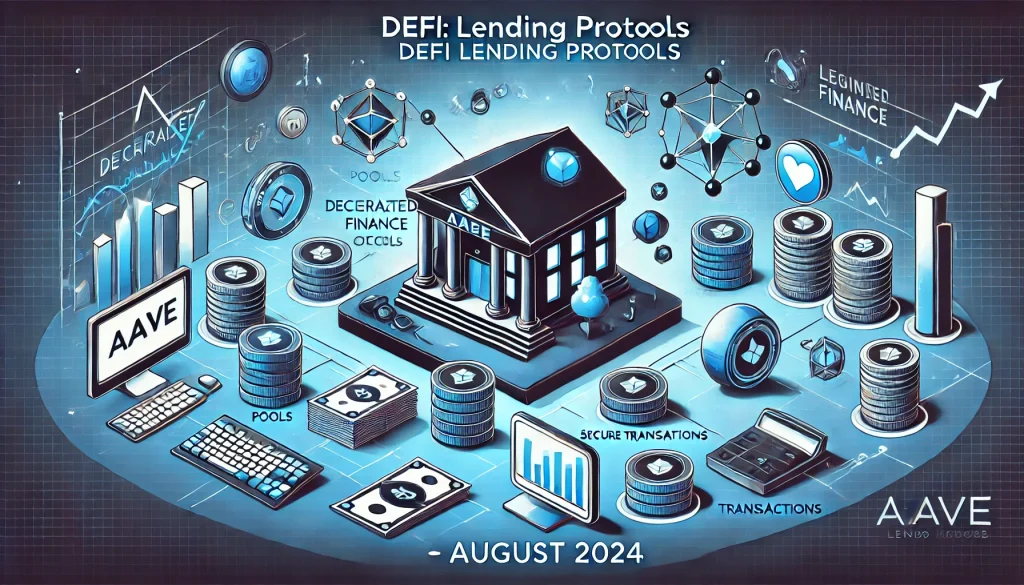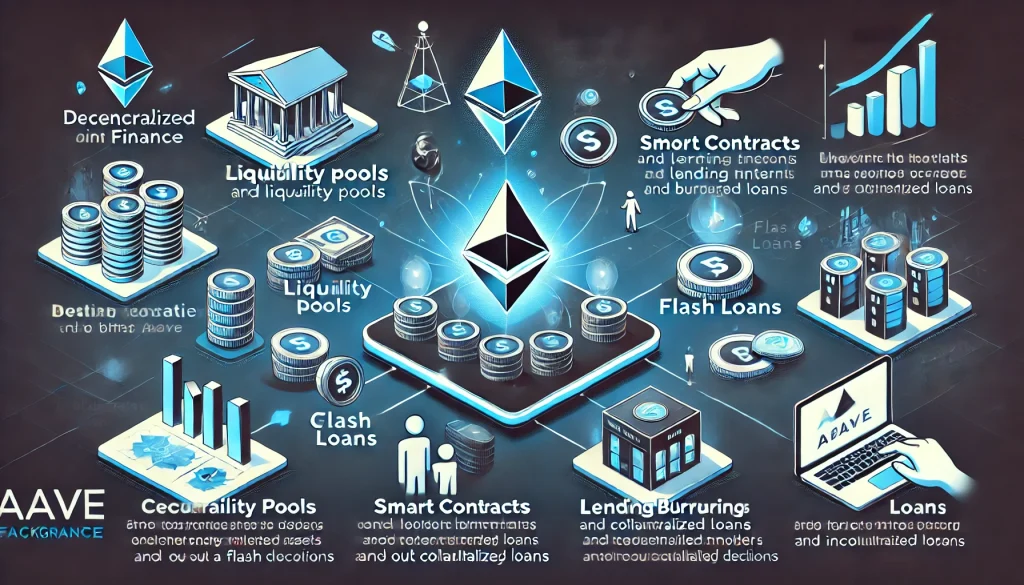
Aave has emerged as a pioneering platform that offers users an innovative way to lend and borrow cryptocurrency. As the traditional banking system faces challenges, Aave offers a decentralized alternative that is secure, transparent, and open to anyone with internet access. Understanding what Aave is and how it works is essential for those interested in exploring the potential of DeFi and the future of financial services.
What is an Aave ?
Aave is a decentralized finance (DeFi) protocol that allows users to lend and borrow cryptocurrency without relying on traditional financial institutions. The term “Aave ” comes from the Finnish word for “ghost,” symbolizing the platform’s emphasis on transparency and open-source development. It operates as a non-tariff liquidity protocol on the Ethereum blockchain, which means that users maintain full control over their funds while engaging in lending or borrowing activities. This allows users to earn interest on deposits or take out loans by providing collateral in a variety of cryptocurrencies. The protocol has revolutionized the way financial transactions are conducted by eliminating intermediaries and reducing associated costs.
Aave Background

This innovative approach to decentralized finance is based on a few key components that distinguish it from the traditional financial system. At its core, Aave acts as a liquidity protocol that allows users to participate as either lenders or borrowers. Lenders provide liquidity to the market by depositing their assets into a smart contract known as a liquidity pool. In return, they earn interest based on the demand to borrow those assets. Borrowers, on the other hand, can take out loans by providing collateral that is securely locked within the protocol.
One of Aave ‘s most notable features was the introduction of “flash loans,” which allow users to borrow without any collateral as long as they return the borrowed amount within the same trading block. This opened up new possibilities for users to arbitrage, refinance, and execute complex trading strategies without being exposed to the risks of traditional borrowing.
Aave ‘s governance model also empowers the community by allowing token holders to participate in the decision-making process. This decentralized governance ensures that the protocol evolves in a way that aligns with the interests of its users.
Origin/History
Aave was founded in 2017 as ETHLend by Stani Kulechov, a Finnish entrepreneur with a background in law. The platform initially focused on peer-to-peer lending, leveraging Ethereum smart contracts to facilitate decentralized lending between users. However, as the decentralized finance ecosystem began to grow, the limitations of the P2P model became apparent. In response, ETHLend rebranded as Aave in 2020, shifting from a P2P lending model to a pool-based model to increase liquidity and flexibility.
The rebranding marked an important turning point in Aave ‘s history, as it quickly gained traction within the DeFi community. It also introduced flash lending and other innovative features that helped it stand out among its competitors, ultimately cementing its position as a leading DeFi protocol.
| Year | Milestones |
|---|---|
| 2017 | Launch of ETHLend with a focus on P2P lending |
| 2020 | Abe V2 Release, Protocol Enhancements |
| 2021 | Aave V2 release, protocol enhancements |
Types of Aave
We offer a variety of lending and borrowing options tailored to the needs of different users within the DeFi ecosystem. Specifically, these options can be categorized by the types of assets supported and the unique features of the loans.
| Type | Description |
|---|---|
| Stable Rate Loans | Fixed-rate loans provide borrowers with predictability. |
| Adjustable Rate Loans | Loans with interest rates that fluctuate based on market conditions. |
| Flash loans | Unsecured loans that must be repaid within the same block of transactions. |
| Mortgages | Loans that require borrowers to deposit assets as collateral. |
How does Aave work?

This operates by utilizing smart contracts deployed on the Ethereum blockchain. These smart contracts manage the entire process of lending and borrowing, ensuring that transactions are executed in a trusted and transparent manner. When a user deposits an asset, the system adds it to a liquidity pool. Other users can then borrow from this pool using their own assets as collateral. The lender earns interest from the interest paid by the borrower.
Aave ‘s unique flash lending allows users to borrow without collateral as long as they repay the loan within the same transaction. This feature is especially useful for arbitrage opportunities where users can capitalize on price discrepancies in different markets.
Aave pros and cons
| Prose | Cones |
|---|---|
| Decentralized | High Ethereum gas fees |
| Operate without intermediaries | Transactions can be expensive. |
| Flash loans | Multifunction printers for new users |
| Instant unsecured loans available | You need to have an accurate understanding of DeFi. |
| Extensive support assets | Smart contract risks |
| Support for multiple cryptocurrencies | Possible vulnerabilities |
| Community governance | Volatile market conditions |
| Users can participate in governance. | Asset values can fluctuate quickly. |
Companies that hold Aave
Several companies and platforms are integrating protocol into their services, highlighting the growing influence of decentralized finance.
Kraken
Kraken, one of the largest cryptocurrency exchanges, has integrated Aave ‘s lending and borrowing services into its platform, allowing users to earn interest on their cryptocurrency holdings directly through the exchange.
Bitstamp
Bitstamp, another prominent cryptocurrency exchange, offers an Aave -based lending option, giving users a decentralized way to earn a return on their assets.
Cryptomart
Cryptomat, a user-friendly cryptocurrency exchange, is also integrating Aave ‘s lending and borrowing features to make it accessible to a wider audience.
Applications of Aave
Aave ‘s decentralized nature and flexible capabilities have led to a wide range of applications across a variety of industries.
Arbitrage
Traders use Aave ‘s flash loans to execute arbitrage strategies, which don’t require large amounts of capital and capitalize on price discrepancies between various exchanges.
Refinancing
Users can refinance existing loans by borrowing on more favorable terms through Aave , which can reduce interest payments.
DeFi Yield Farming
This is essential to many yield farming strategies, where users lock their assets in DeFi protocols to earn high returns, often involving complex strategies to maximize yields.
Decentralized exchanges (DEXs)
Many decentralized exchanges integrate Aave to provide liquidity and lending options, enhancing the overall functionality of the DeFi ecosystem.
Conclusion
This represents a significant development in the world of decentralized finance, offering users an innovative and secure way to lend and borrow cryptocurrency. Unique features like flash lending and community governance set it apart from other DeFi protocols, making it a cornerstone of the DeFi movement. Understanding this is crucial for anyone looking to explore the future of finance.
References
- Investopedia. What is an Aave ?
- Cryptomart. What is Aave ?
- Kraken. What’s an Aave ?
- Coindesk. Understanding crypto lending platforms.
- Bitstamp. What is Abe?
